Gardens feel more alive when there’s something happening in every season, spring buds, summer flowers, fall color, and winter structure. Shrubs can quietly anchor that rhythm, filling gaps between fleeting blooms and tying everything together with shape and texture. They’re the steady presence in a space that’s always shifting.
If you’re looking to make your garden feel more settled and complete, the right shrubs can do a lot of heavy lifting. Some bring flowers, others bring color in stems or foliage, and a few manage to stay interesting even in the greyest months. Here are 23 shrubs that don’t just sit in the background, they shape the whole feel of a garden, all year long.
Boxwood (Buxus sempervirens)
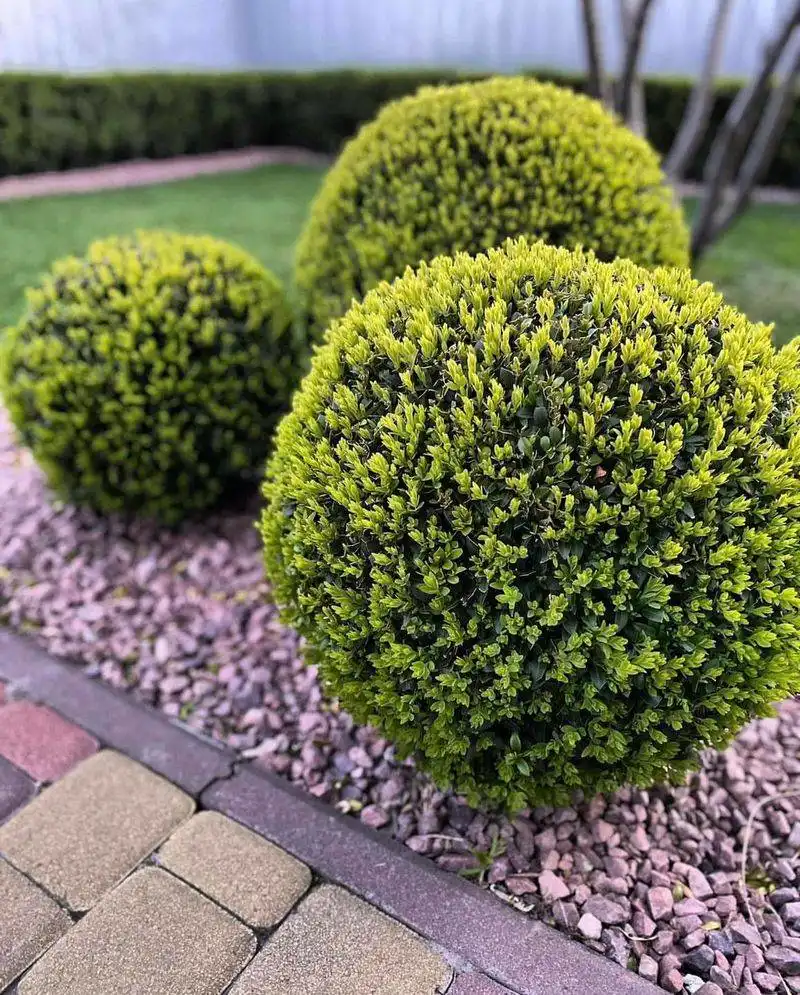
Boxwood is renowned for its classic appeal and versatility in landscaping. Its dense foliage makes it perfect for hedges, topiaries, and garden borders. With its evergreen nature, Boxwood provides year-round interest and structure to gardens.
Its ability to withstand heavy pruning allows for creative shaping, making it a favorite among garden designers. The deep green leaves of Boxwood can serve as a backdrop for colorful blooms, creating a harmonious balance in any garden.
Did you know? Boxwood has been a symbol of immortality and protection in gardens since ancient Roman times.
Hydrangea (Hydrangea macrophylla)

Hydrangeas captivate gardeners with their large, showy blooms that change color based on soil pH. These shrubs are known for their lush, round flower clusters that range from white to vibrant pink, blue, or purple.
Hydrangeas offer a dynamic visual display, ensuring your garden remains alive with color throughout the growing season. They thrive in well-drained soil, preferring morning sun and afternoon shade.
Fun fact: Hydrangeas have been cultivated in Asia for centuries and were introduced to Europe in the 18th century, quickly becoming a staple in ornamental gardens.
Lilac (Syringa vulgaris)
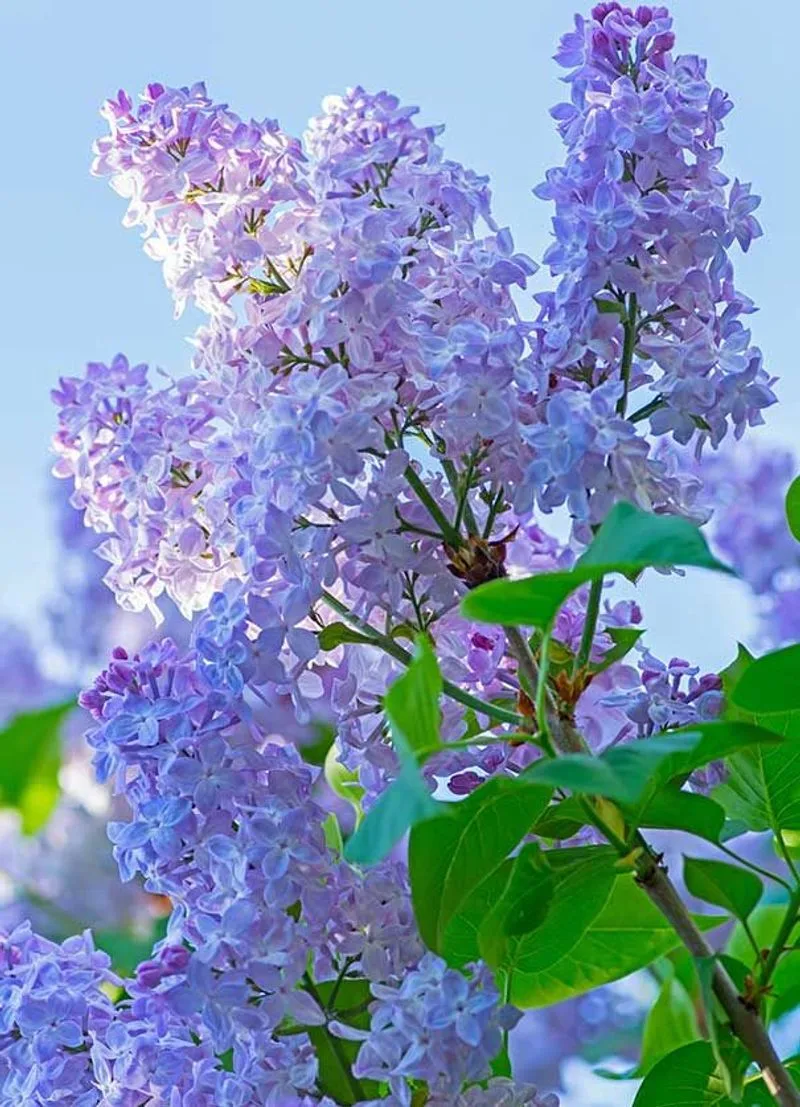
Lilacs are cherished for their intoxicating fragrance and vibrant blossoms that herald the arrival of spring. These shrubs produce conical clusters of flowers in shades of purple, pink, and white, attracting both humans and pollinators.
With a long history of cultivation, lilacs have become synonymous with nostalgic garden charm. They require well-drained soil and full sun to flourish.
Did you know? Lilacs are celebrated for their symbolism of love and renewal, often featured in poetry and art to evoke the beauty of spring.
Azalea (Rhododendron spp.)
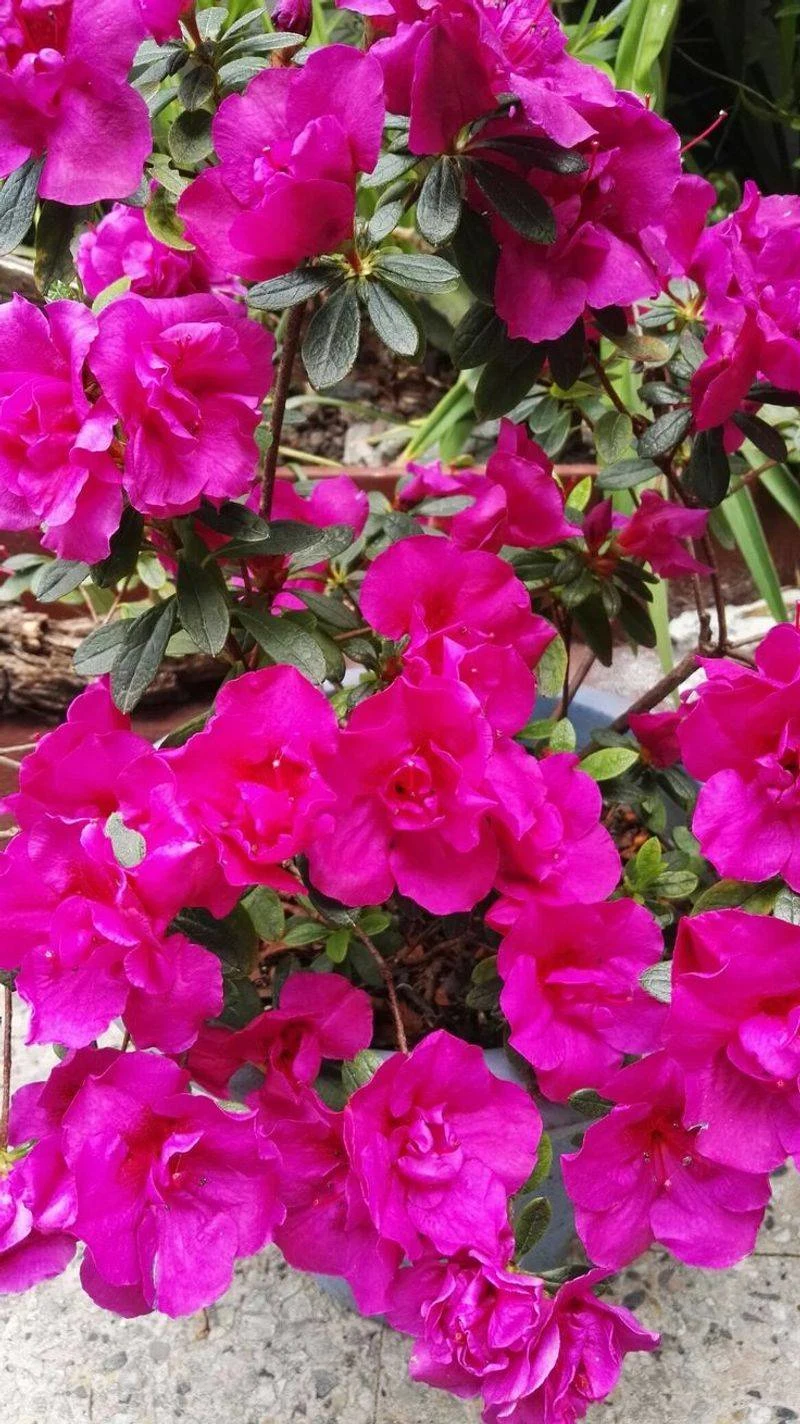
Azaleas are a gardener’s delight, known for their vibrant and profuse blooms in spring. These shrubs are part of the Rhododendron family and come in a dazzling array of colors.
Azaleas thrive in acidic, well-drained soil and prefer partial shade, making them ideal for woodland gardens. Their captivating flowers draw in pollinators and create a striking visual impact.
Fun fact: Azaleas were first cultivated in Asia and have been prized for centuries for their beauty and ornamental value in traditional gardens.
Rose (Rosa spp.)
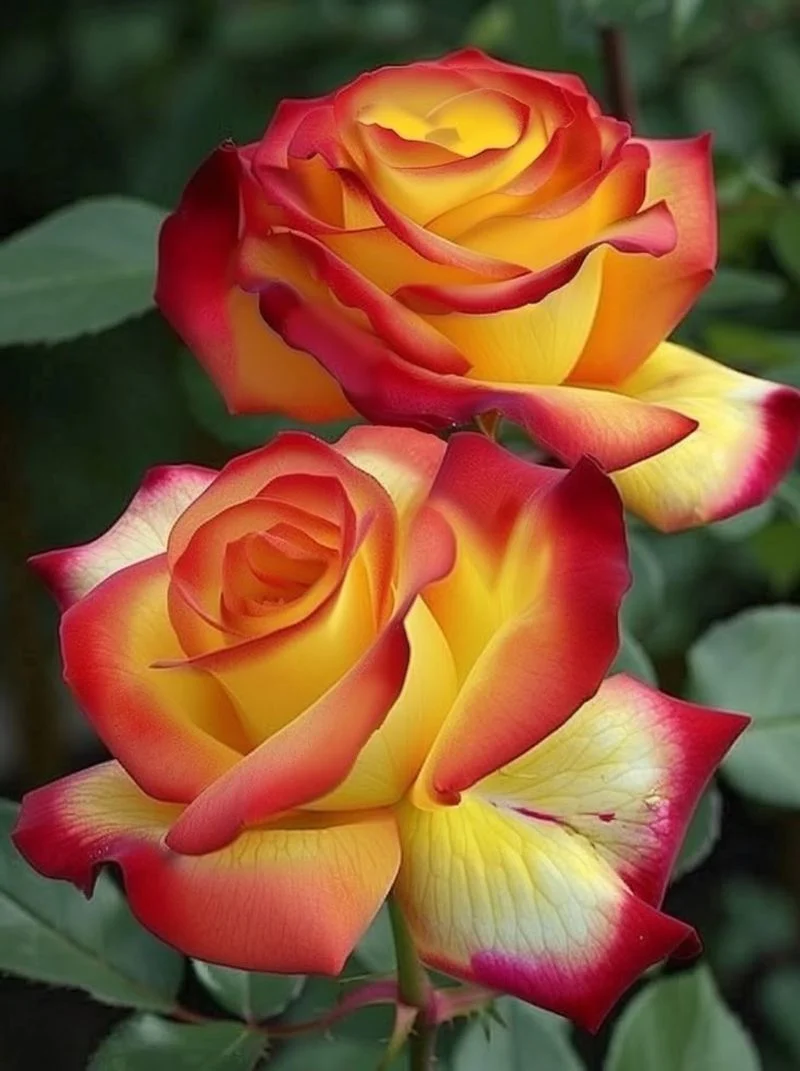
Roses are emblematic of romance and beauty, with a rich tapestry of colors and varieties. These shrubs are adored for their fragrant blooms and timeless elegance.
Roses require well-drained soil and full sun to reach their full potential. Their flowers, ranging from delicate pastels to dramatic reds, create a lasting impression in any garden.
Did you know? Roses have been cultivated for over 5,000 years, originating in Asia and spreading throughout the world as symbols of love and beauty.
Forsythia (Forsythia spp.)
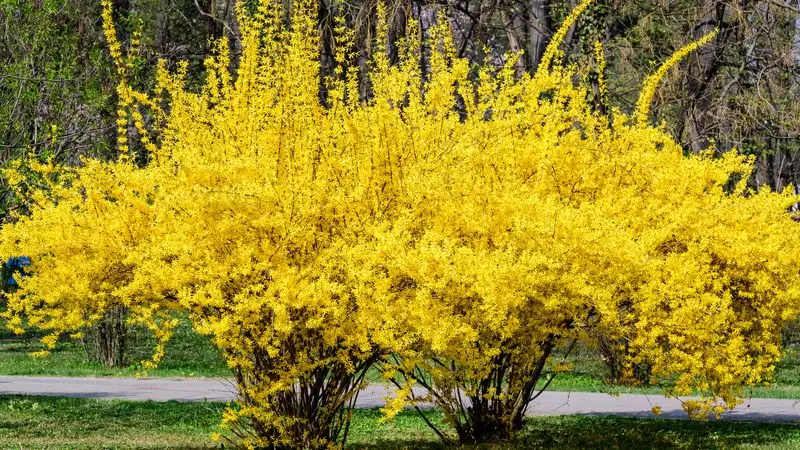
Forsythias announce the arrival of spring with their exuberant yellow flowers. These early-blooming shrubs are a beacon of color after the dull days of winter.
With their arching branches, Forsythias create a natural cascading effect, adding movement and energy to any landscape. They are low-maintenance and tolerant of a range of soil conditions.
Fun fact: Forsythias are often used in traditional Chinese medicine to treat colds and fevers, showcasing their multifaceted value beyond garden aesthetics.
Butterfly Bush (Buddleja davidii)
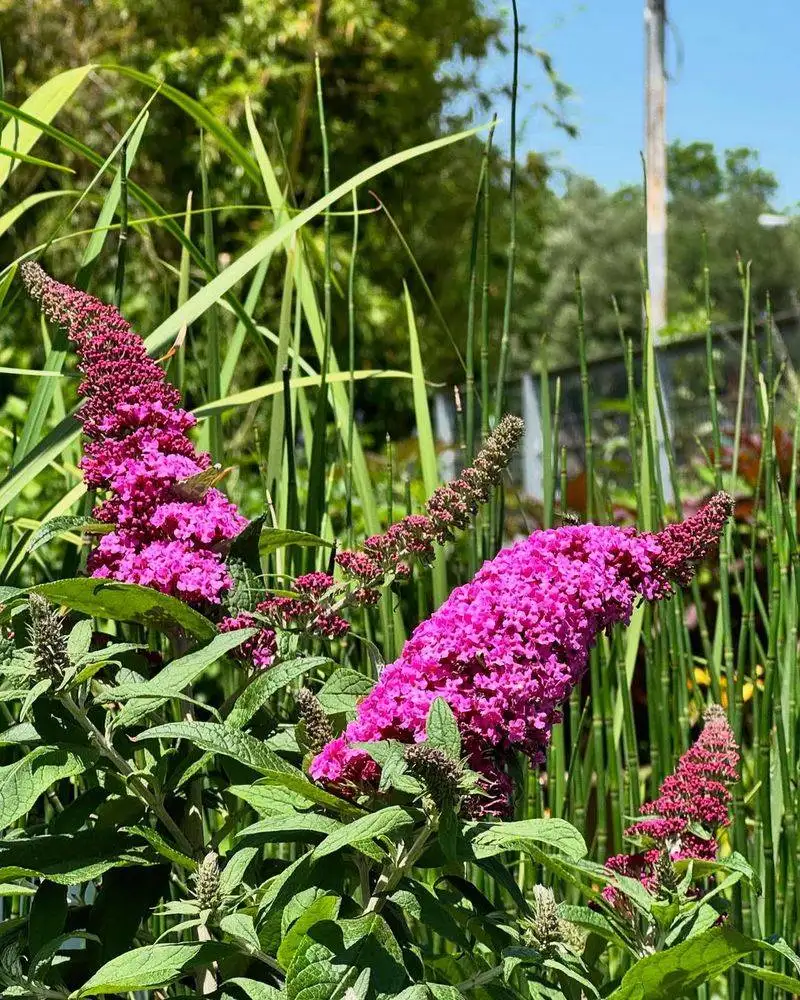
The Butterfly Bush is beloved for its ability to attract a diverse array of pollinators, including its namesake butterflies. Its fragrant, spiky blooms appear in late summer and continue into fall, providing extended seasonal interest.
This hardy shrub thrives in full sun and well-drained soil, requiring minimal maintenance. The Butterfly Bush’s colorful flowers serve as a magnet for wildlife, enhancing both the beauty and biodiversity of your garden.
Did you know? Despite its attractiveness, the Butterfly Bush is considered invasive in some regions, so responsible planting is encouraged.
Spirea (Spiraea spp.)
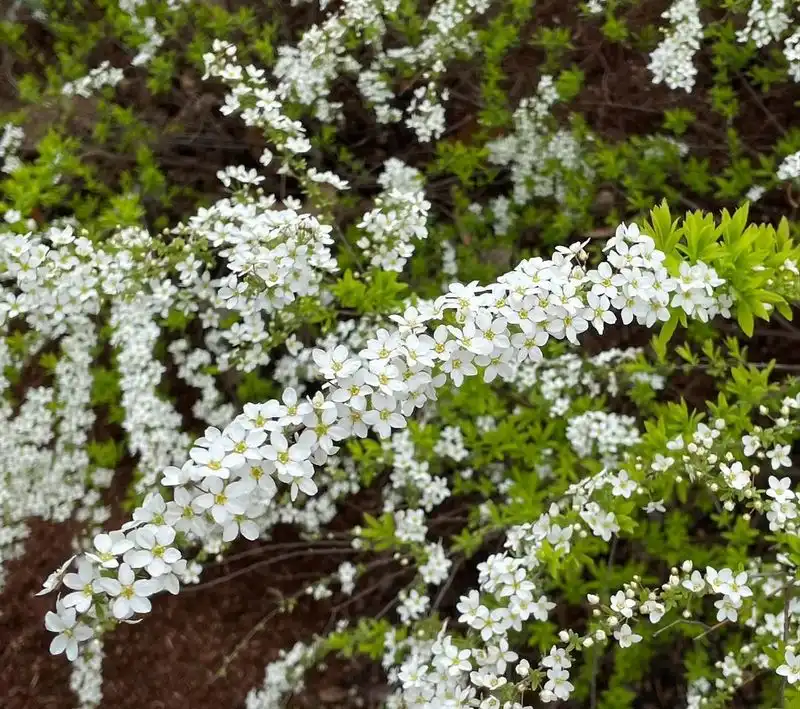
Spirea offers a captivating display of small, clustered flowers that burst forth in spring and summer. These shrubs are known for their hardiness and adaptability, making them a staple in diverse garden settings.
With varieties that produce pink, white, or red flowers, Spireas can fit any garden color scheme. They prefer full sun but can tolerate partial shade, adding versatility to their charm.
Fun fact: Spirea was historically used to create bridal wreaths, symbolizing purity and beauty—a tradition that continues in some cultures today.
Japanese Maple (Acer palmatum)
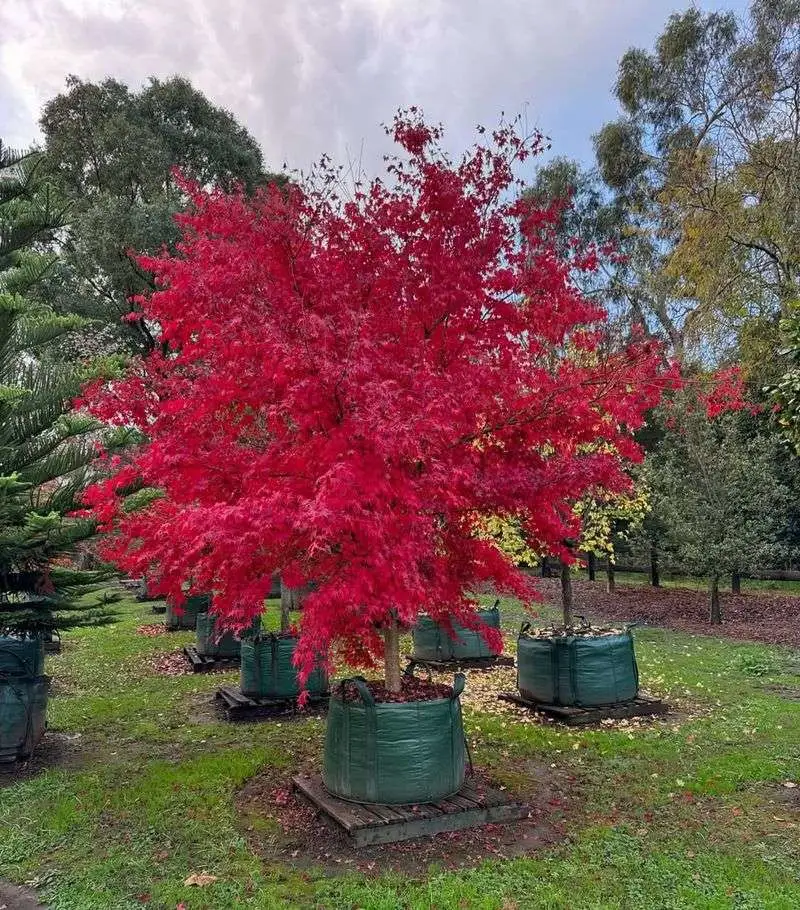
Japanese Maples are celebrated for their stunning foliage, which transforms with the seasons. Their delicate leaves and graceful branches bring elegance and tranquility to gardens.
These shrubs thrive in partial shade and well-drained soil, adding a touch of the exotic to both traditional and modern landscapes. Japanese Maples are highly prized for their fall color, ranging from fiery reds to vibrant oranges.
Did you know? Japanese Maples have been cultivated in Japan for over 400 years, often found in traditional gardens and bonsai collections.
Weigela (Weigela florida)
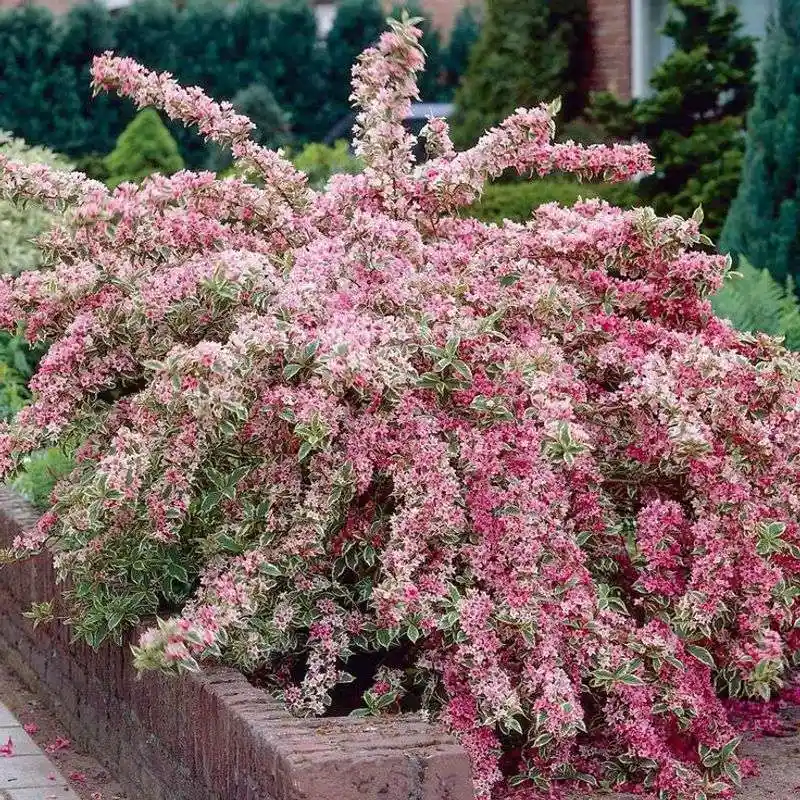
Weigela is a versatile shrub known for its showy, tubular flowers that attract hummingbirds and bees. Blooming profusely in spring, it often provides a second flush of color in late summer.
These shrubs are easy to grow, thriving in full sun and average garden soil. Weigela’s arching branches and vibrant blooms add a touch of whimsy and romance to any garden setting.
Fun fact: The Weigela genus is named after the German scientist Christian Ehrenfried Weigel, who contributed significantly to botany in the 18th century.
Hibiscus (Hibiscus syriacus)
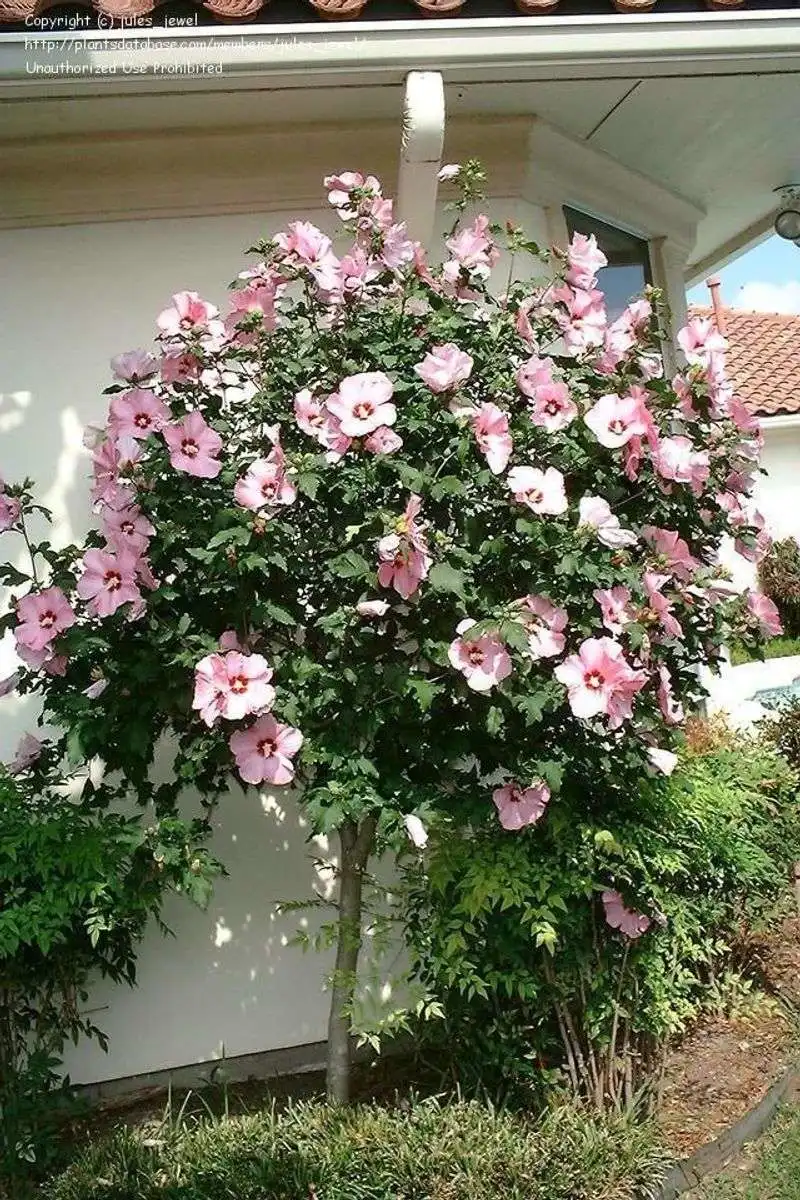
Hibiscus shrubs, often referred to as Rose of Sharon, are celebrated for their large, exotic blooms that provide a tropical flair to gardens. Their flowers range from white to vibrant pinks and purples.
These hardy shrubs are well-suited to full sun and slightly acidic soil. Hibiscus flowers are not only beautiful but also attract pollinators, enhancing garden biodiversity.
Did you know? Hibiscus tea, made from the dried flowers, is a popular beverage worldwide, known for its tangy flavor and potential health benefits.
Camellia (Camellia japonica)

Camellias are the jewels of winter gardens, blooming when most plants lie dormant. Their exquisite flowers and glossy leaves make them a standout feature from fall to early spring.
These shrubs prefer acidic, well-drained soil and partial shade, thriving in woodland settings. The flowers of Camellia, ranging from white to deep red, add elegance and color when the garden needs it most.
Fun fact: Camellias have a rich cultural heritage, especially in Japan and China, where they symbolize purity and longevity in art and literature.
Smoke Bush (Cotinus coggygria)
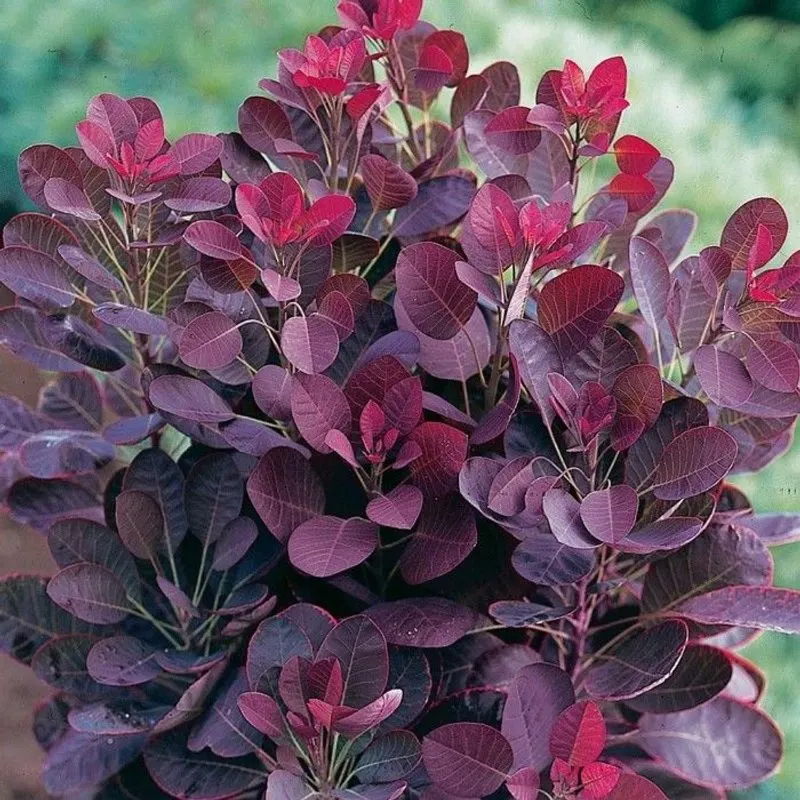
The Smoke Bush is known for its dramatic, smoke-like flower clusters that appear in mid-summer. These unique shrubs add an ethereal quality to gardens with their billowing pink or purple blooms.
Smoke Bushes thrive in full sun and well-drained soil, with foliage that shifts from deep green to vibrant purple in the fall. Their striking appearance makes them a focal point in any landscape design.
Did you know? The Smoke Bush’s scientific name, Cotinus, is derived from an ancient Greek word referring to its smoky appearance.
Holly (Ilex spp.)
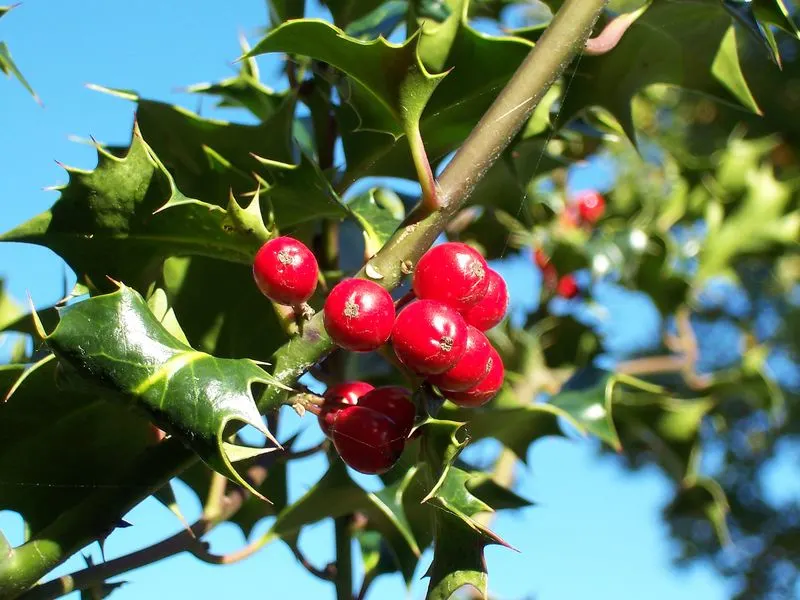
Holly is synonymous with festive cheer, known for its glossy green leaves and bright red berries. These evergreen shrubs are a symbol of winter beauty and are often used in holiday decorations.
Holly thrives in a range of climates and soil types, providing color and interest during the coldest months. Their dense foliage offers year-round privacy and shelter for wildlife.
Fun fact: Holly has been associated with various cultural traditions, symbolizing protection and eternal life in folklore around the world.
Rhododendron (Rhododendron spp.)
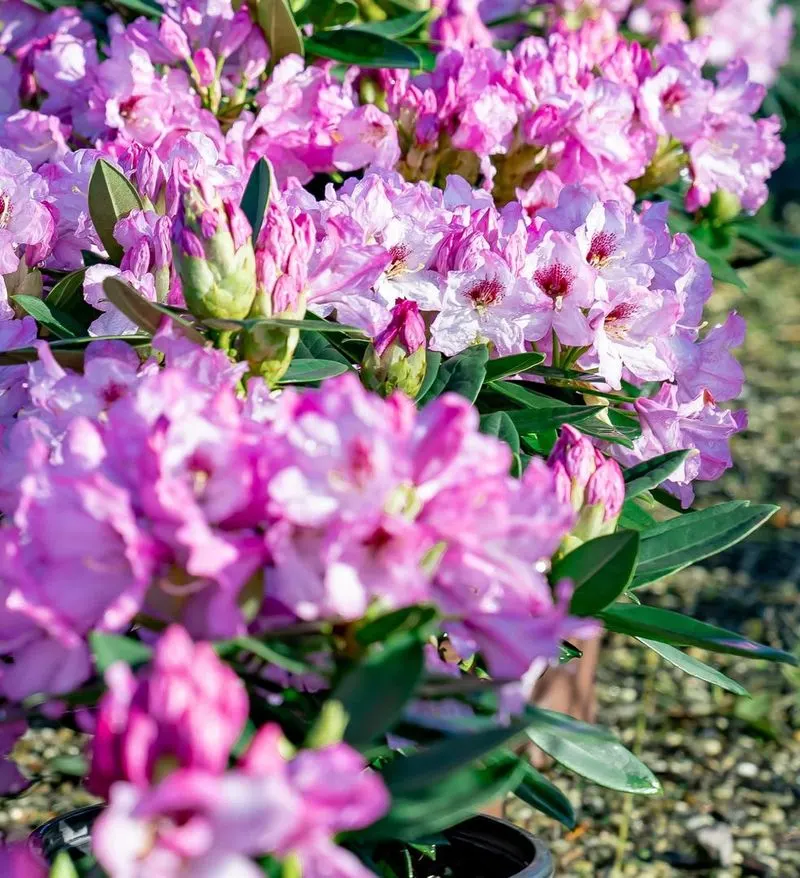
Rhododendrons are admired for their spectacular, large clusters of flowers that bloom in spring. These shrubs are part of the same family as azaleas and offer a wide range of colors.
They thrive in acidic, well-drained soil and prefer partial shade, making them ideal for woodland gardens. Rhododendrons’ lush blooms and glossy leaves create a luxurious feel in any landscape.
Did you know? Rhododendrons have been celebrated in horticulture for centuries, with over a thousand species cultivated worldwide for their beauty and resilience.
Privet (Ligustrum spp.)

Privet is a popular choice for hedging, offering dense foliage and fast growth. These shrubs are easily shaped and maintained, providing privacy and structure to gardens.
Thriving in a variety of soils and sun conditions, Privet is both versatile and hardy. Its small white flowers, followed by dark berries, add seasonal interest beyond its evergreen leaves.
Fun fact: Privet has been used historically in traditional medicine and as a natural dye, demonstrating its utility beyond the garden aesthetic.
Winterberry (Ilex verticillata)
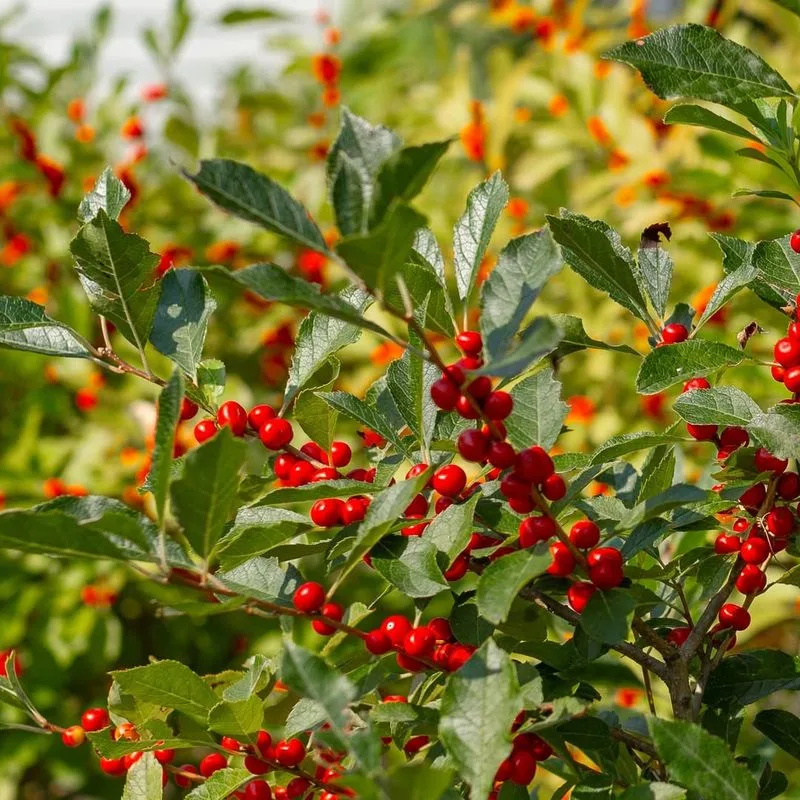
Winterberry holly is a standout deciduous shrub known for its vibrant red berries that linger into winter. These berries provide a striking contrast against the bare branches, adding color to winter landscapes.
Winterberry thrives in moist, acidic soil and can tolerate both full sun and partial shade. They are a favorite among birdwatchers, as the berries attract various bird species.
Did you know? Winterberry is native to North America and has been used in traditional medicine by Native Americans for its potential health benefits.
Viburnum (Viburnum spp.)
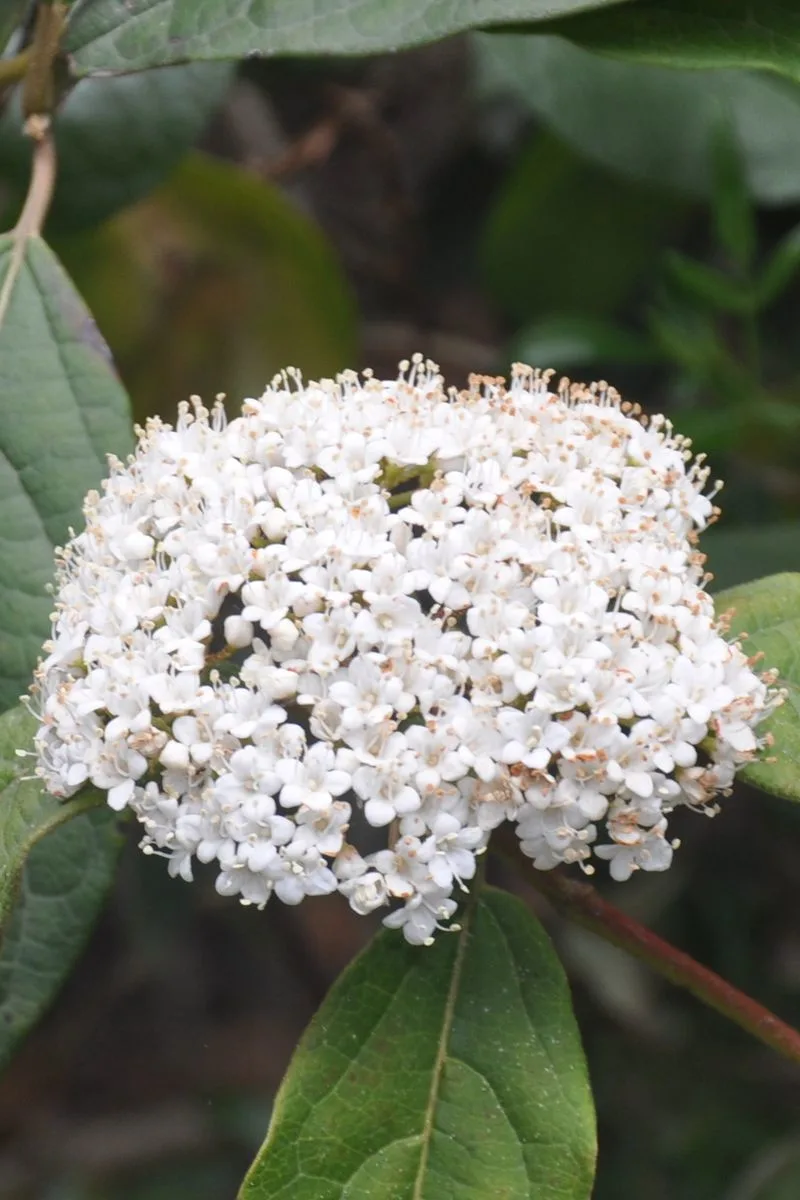
Viburnums are versatile shrubs that offer seasonal interest with their delicate flowers and colorful fruits. These hardy plants can adapt to a variety of garden conditions.
Their blooms range from creamy white to pink, and they produce vibrant berries in fall, adding extra visual appeal. Viburnums’ lush foliage and sweet fragrance make them a garden favorite.
Fun fact: Viburnum species are used as host plants for certain butterfly species, contributing to biodiversity and ecological health in gardens.
Heather (Calluna vulgaris)
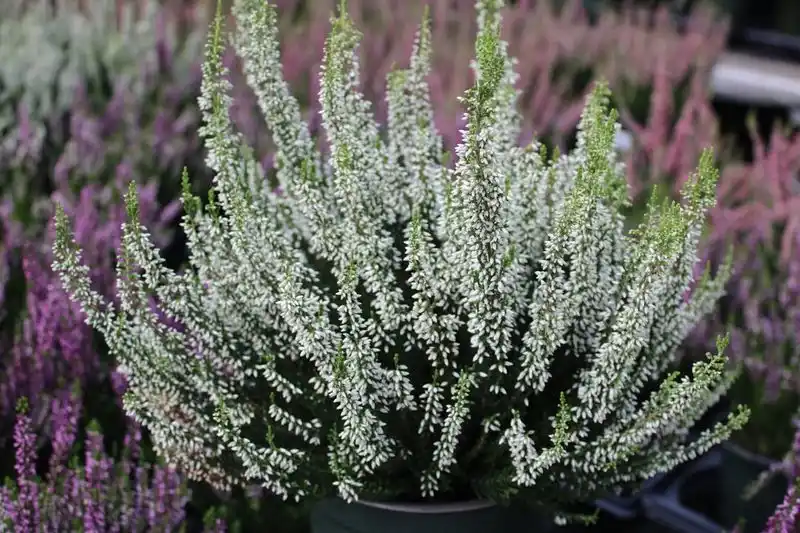
Heather is celebrated for its hardy nature and beauty in challenging environments. It thrives in acidic, well-drained soils and is often found in moorlands and heathlands.
With its tiny, bell-shaped flowers and needle-like leaves, Heather provides continuous color from late summer into fall. This resilient shrub is a symbol of Scotland, representing admiration and good fortune.
Did you know? Heather has been used traditionally to make brooms, bedding, and even beer, highlighting its historical importance beyond ornamental use.
Daphne (Daphne spp.)
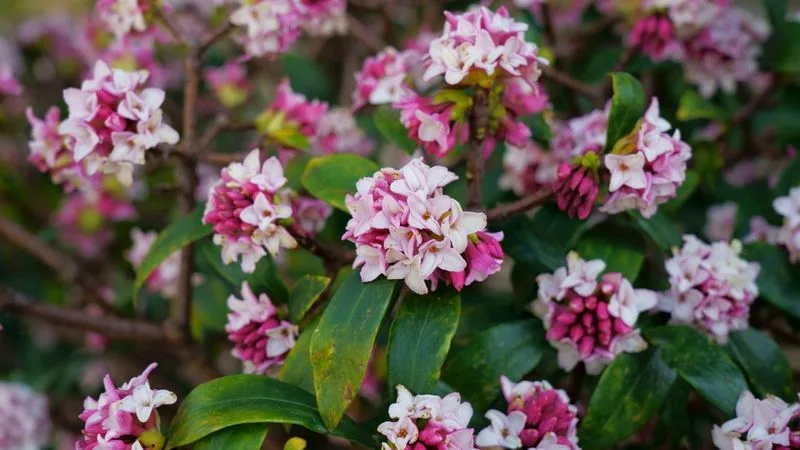
Daphne shrubs are cherished for their exquisite fragrance and delicate blooms. They typically flower in late winter to early spring, providing early color to gardens.
Daphnes prefer well-drained soil and a sheltered spot with partial shade. Their flowers, usually pink or white, exude a delightful scent that draws admirers from near and far.
Fun fact: Despite their beauty, Daphne plants are toxic if ingested, so it’s important to enjoy their blossoms with caution, especially around pets and children.
Crape Myrtle (Lagerstroemia spp.)
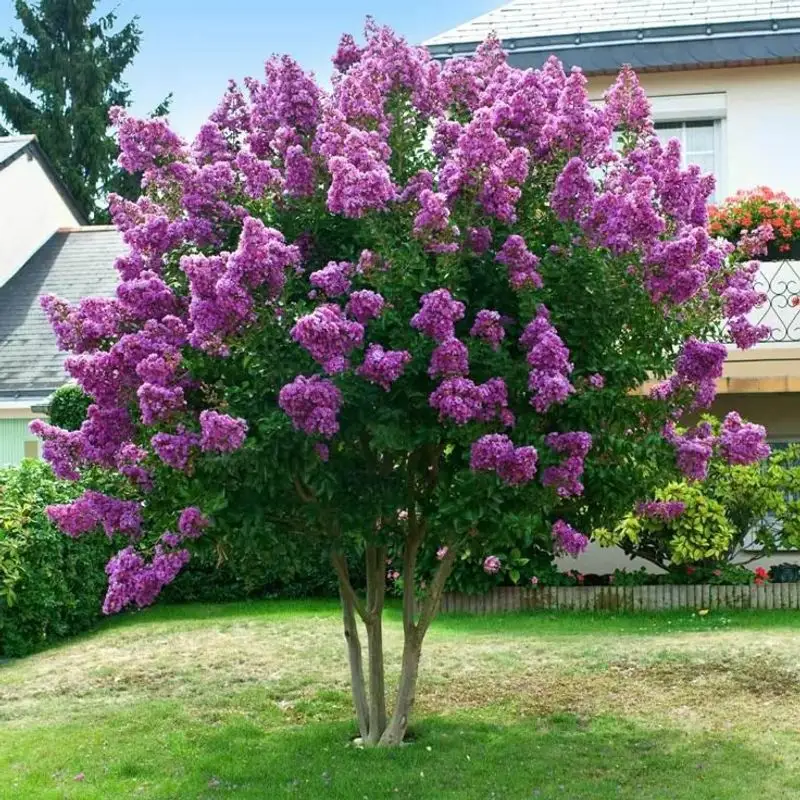
Crape Myrtles are known for their stunning summer blooms and smooth, mottled bark. Their vibrant flowers range from pink to red, purple, and white, offering a long-lasting display.
These shrubs or small trees thrive in full sun and well-drained soil. Crape Myrtles also provide fall interest with their colorful foliage and unique bark textures.
Did you know? Crape Myrtles are native to Southeast Asia and were introduced to North America in the 18th century, quickly becoming a favorite for ornamental planting.
Witch Hazel (Hamamelis spp.)
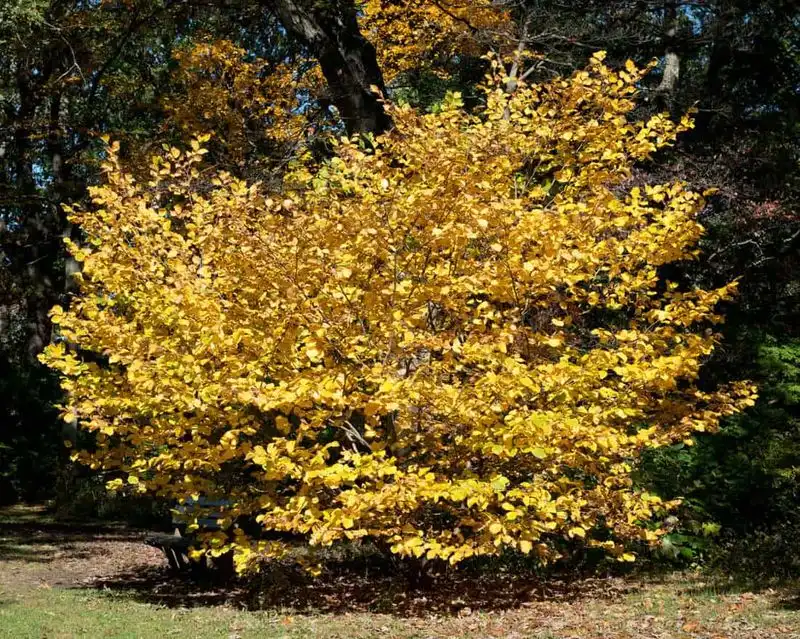
Witch Hazel captivates with its unique, spidery yellow flowers that bloom in the depths of winter. These hardy shrubs bring unexpected cheer to cold landscapes.
Requiring full sun to partial shade and well-drained soil, Witch Hazels are adaptable and low-maintenance. Their fragrant flowers and vibrant fall foliage add year-round appeal.
Fun fact: Witch Hazel extract, derived from the bark and leaves, is widely used in skincare products for its soothing properties, highlighting its functional versatility.
Ninebark (Physocarpus opulifolius)
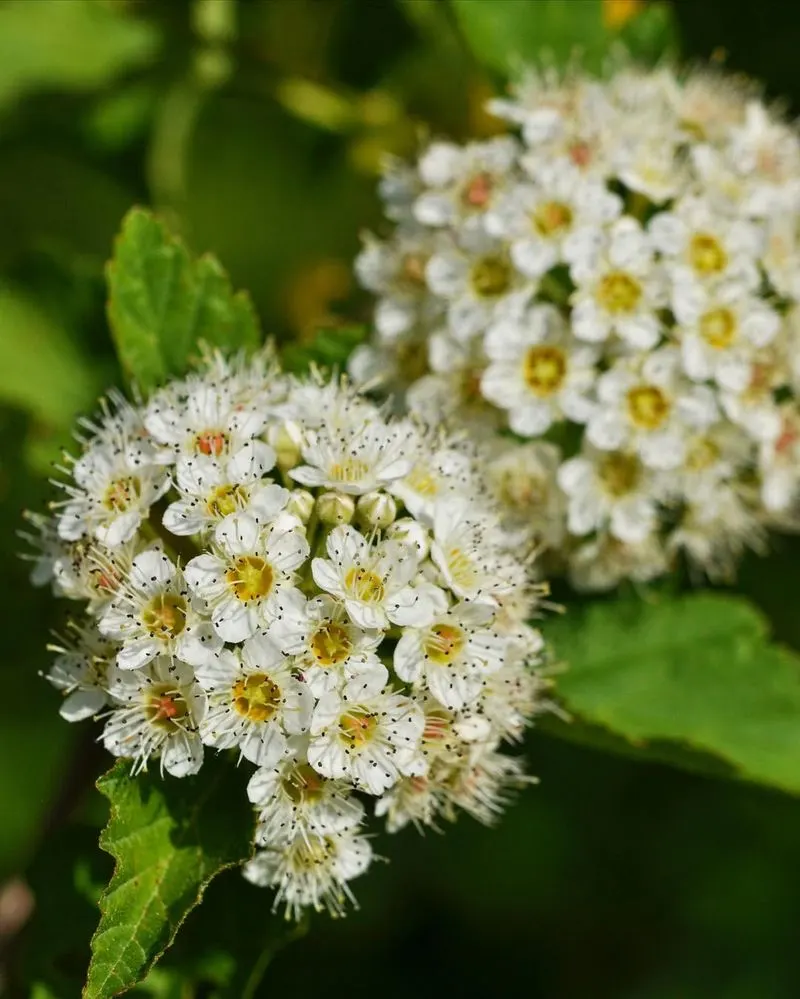
Ninebark is prized for its unique exfoliating bark and cascading blooms. This hardy shrub thrives in full sun and a range of soil types, making it a resilient choice for gardens.
Its flowers, appearing in late spring, are followed by decorative seed pods, offering interest beyond the blooming period. Ninebark’s foliage can vary from deep purple to bright green.
Did you know? The name “Ninebark” refers to the shrub’s habit of shedding its bark in layers, revealing multiple colors and textures, adding to its visual intrigue.

